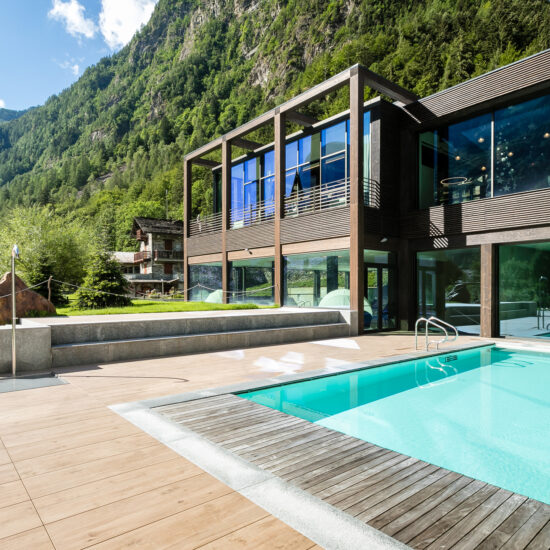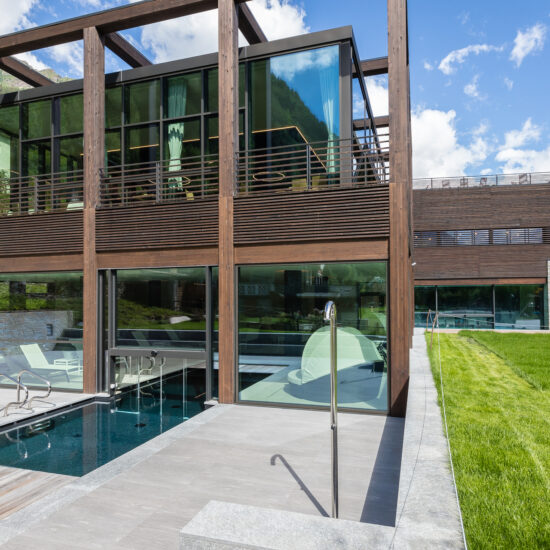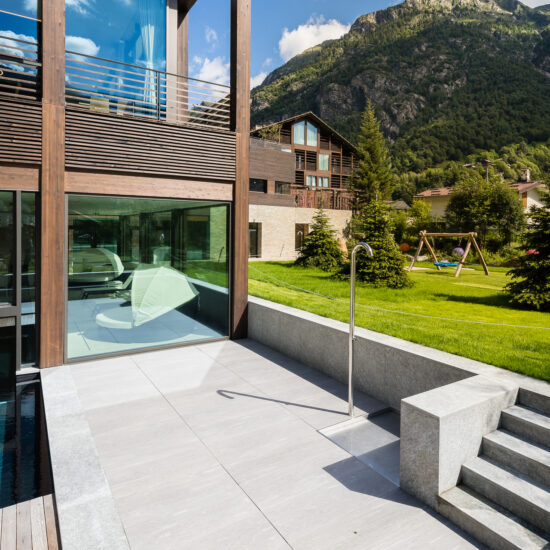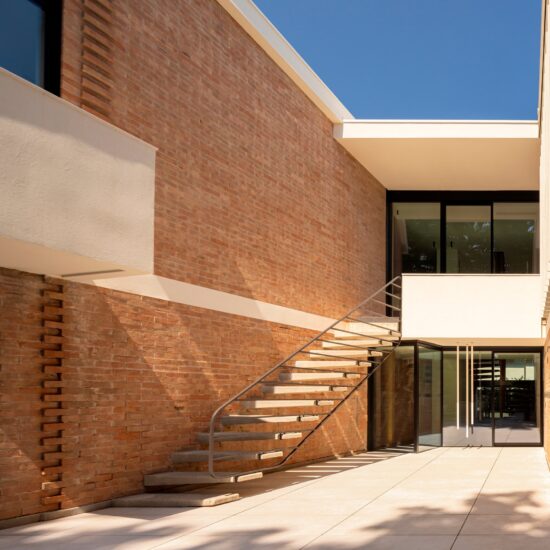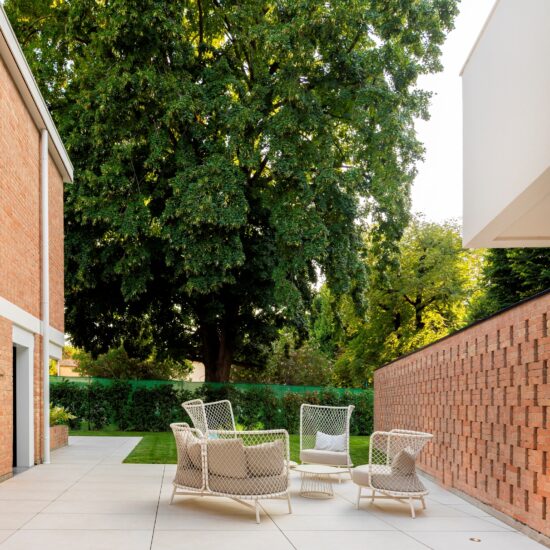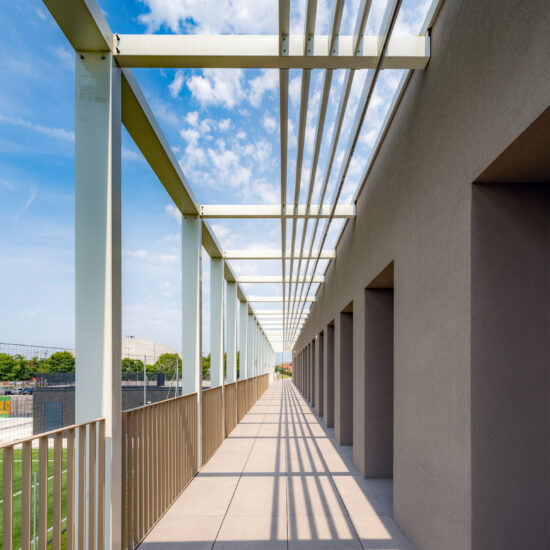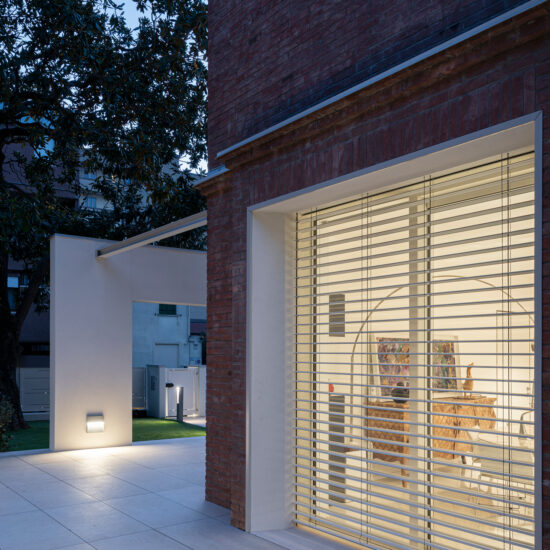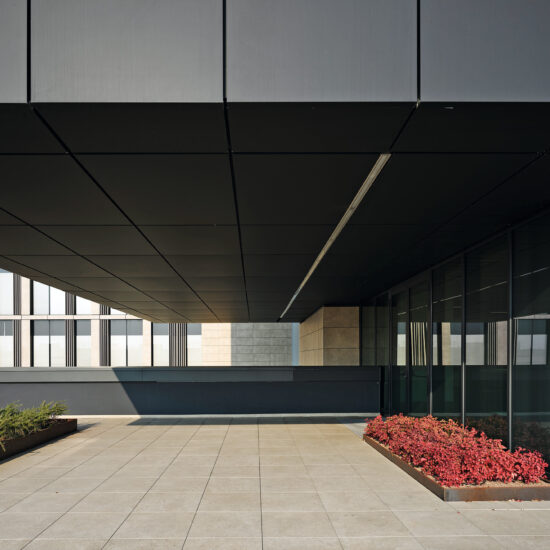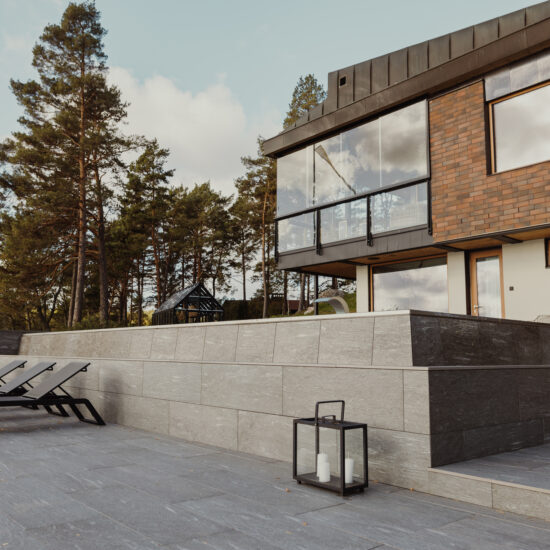But what is floating paving for terraces? Also know as a “raised paving”, it is a paving system installed “dry”, meaning without using adhesives or mortars, on top of an existing paving. This system is a versatile, convenient option for outdoor locations, as well as offering elegant finishes and a wide range of design alternatives.
In this article we’ll explore the various types of floating paving available for outdoor terraces and assess the pros and cons of this choice, to find out how to use it to best effect and give beauty and practicality to your location.
Types of raised paving for outdoor terraces
A floating terrace paving is ideal for anyone seeking a convenient yet still impeccably stylish solution: it offers a surprising variety of materials and designs, each with its own distinctive features. The choice ranges from materials that imitate the natural beauty of wood to ceramic or porcelain stoneware tiles.
Each material provides specific benefits in terms of durability, strength and ease of cleaning. For example, stoneware is well known for its resistance to weather and its minimal care requirements, making it the best solution for outdoor areas.
So floating tiles are very widely used for paving terraces, because they combine an elegant finish with the convenient installation typical of floating systems.
Wood-effect outdoor floating paving
Amongst the popular options for outdoor floating paving, wood-effect materials combine the warm, welcoming look of natural wood with the strength and durability of the most innovative materials.
These solutions are perfect for terraces, balconies and gardens, as they offer a hard-wearing look with a timeless beauty that fits attractively into the surrounding environment.
Installing a floating terrace paving
No adhesives or mortars are needed when installing a floating paving on your terrace, so the raised paving installation process is surprisingly quick and easy.
To be sure of a perfect result, start by preparing the substrate: the surface on which the raised paving pedestals will be installed must be perfectly clean, dry and levelled so there is no unevenness to adversely affect the finished appearance.
Also remember to measure the area of the terrace for paving precisely, to enable optimal planning of the tile layout and avoid unsightly cuts in the material. Installation is not particularly complex, because most floating paving systems interlock easily, with no special tools required.
Finally, apply all the finishing touches to conceal any cut edges and provide a neater end result.
Caring for a floating terrace paving correctly
Installing a floating paving on your terrace is a way of investing in your home’s aesthetic and functional value that avoids lengthy installation procedures and provides many benefits.
When designing a floating paving for a terrace, and also afterwards, during its routine maintenance, careful consideration must be given to a number of factors that affect the end result, such as the choice of material and the size of both the tiles and the area to be covered.
Your main guide when choosing the right material for your terrace will be the technical characteristics: for an outdoor location, you need a paving that is hard-wearing, durable over time and anti-slip.
In addition, bear in mind that cleaning and inspecting the paving regularly will help you to get full benefit from your investment: with the right care, your paving will retain its attractive appearance and its functional properties over the years and not need frequent replacements or repairs, so maintenance costs will be low.
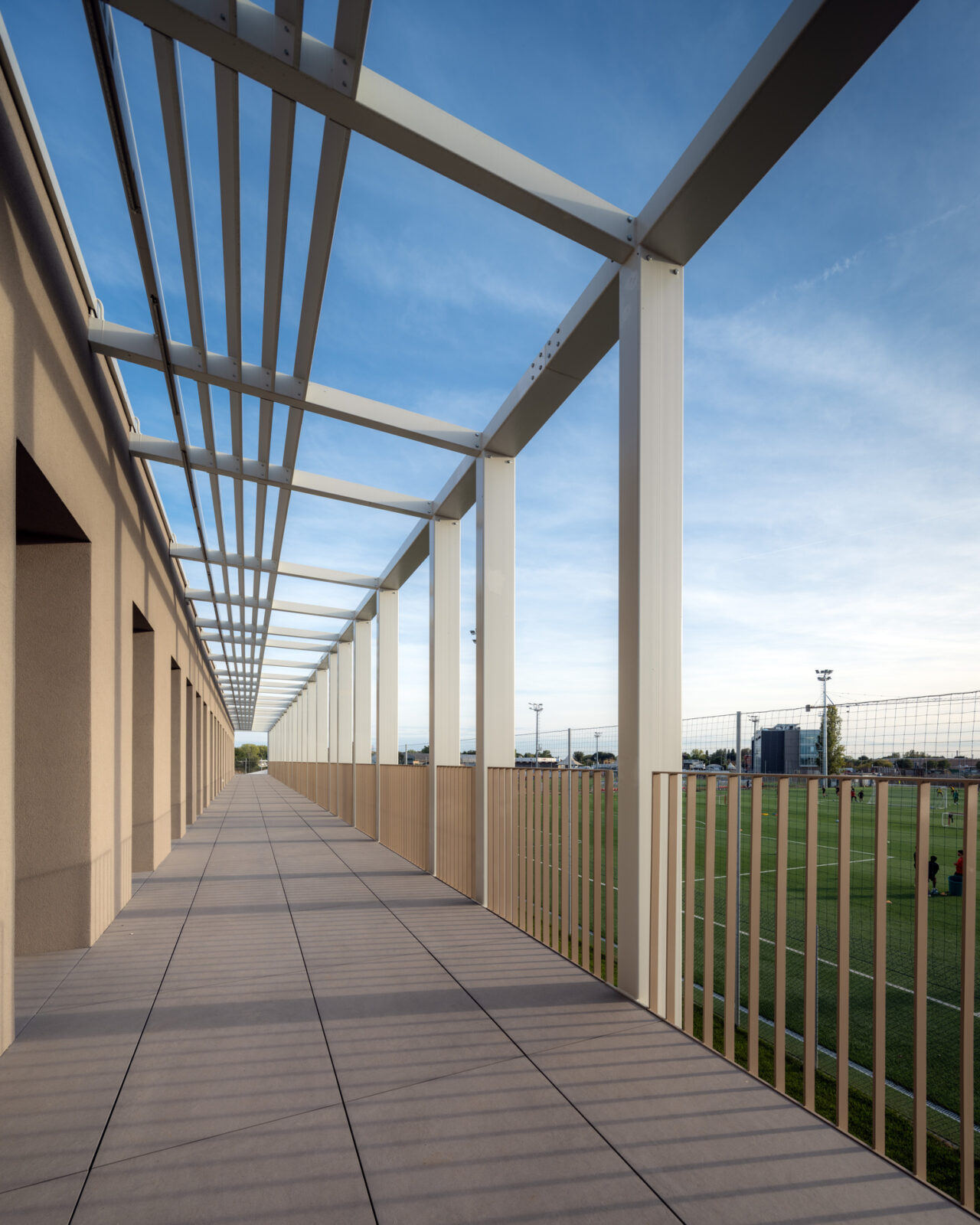
Floating paving for outdoor terraces: pros and cons
As already mentioned, the main benefits of choosing a floating paving definitely include easy installation and the speed of the process, since no construction works are required.
In fact there are no specific drawbacks to a raised paving, because thanks to the latest technologies a convenient, attractive, hard-wearing surface can be provided for every need. When installing a raised paving on top of an existing paving it is important to ensure that there are no cracks or unevenness; for optimal results, the substrate must be stable.
Last but not least, like any type of paving, the floating variety requires the right routine care to maintain its functional properties over time.
Ideas and inspirations for terraces with floating paving
Choosing a floating paving for your terrace opens out a whole world of possibilities in terms of style and design. Whether you go for a wood effect that evokes the warm, welcoming mood of a wooded landscape, or a stone effect for a touch of timeless elegance, every preference is catered for.
For lovers of contemporary design, metal-effect options or coloured variants are a more daring visual alternative, which can add personality to your outdoor space with truly original options.
The secret of the perfect floating terrace paving is to choose a solution that dialogues attractively with both the interior of the home and the outdoor environment. For a more subtle visual transition, opt for surfaces well matched with the materials and colours of the building itself. In the project for the renovation of Cascina Boffalora at Lesmo (Monza-Brianza, Italy), the Marazzi raised paving strongly enhanced the warmth of the design scheme and blended perfectly with both the modern technologies used and the historic building’s external architecture.
Another fine example of use of the floating system for a porcelain stoneware paving is the Villa Levante project, on the island of Albarella (Rovigo, Italy). In this case, the terrace was covered with the Memento20 collection in Silver colour, further enhancing the elegance of the concrete effect by leaving only a very thin joint between the tiles.
Reasons for choosing a floating paving for your terrace
A floating paving is a truly excellent choice for a terrace and outdoor areas. As well as offering a vast array of design options and looks, this solution is also easy to install and hard-wearing. What’s more, as we’ve seen, installing a raised paving involves no construction works, so areas can be refurbished very quickly.
Floating paving also offers many benefits with regard to maintenance : as tiles are so easy to install and replace, this technology is ideal for anyone looking for a solution that’s easily adaptable over time. Resistance to mould and the proliferation of bacteria keep the environment healthy and easy to clean, while provision of the right slope will prevent localised areas of standing water.
A floating paving can transform the look of your terrace, making it elegant, convenient and easy to care for.
Explore the wide range of Marazzi raised paving materials: choose the surface that best combines your style and personality with the needs of an outdoor paving and design your spaces with our leading-edge technologies.

































